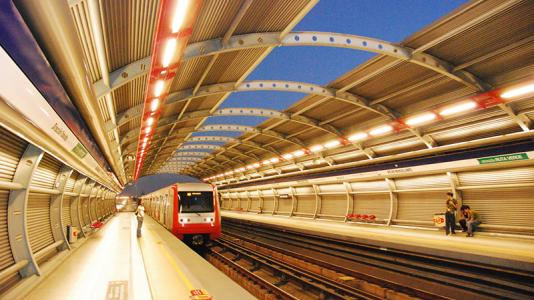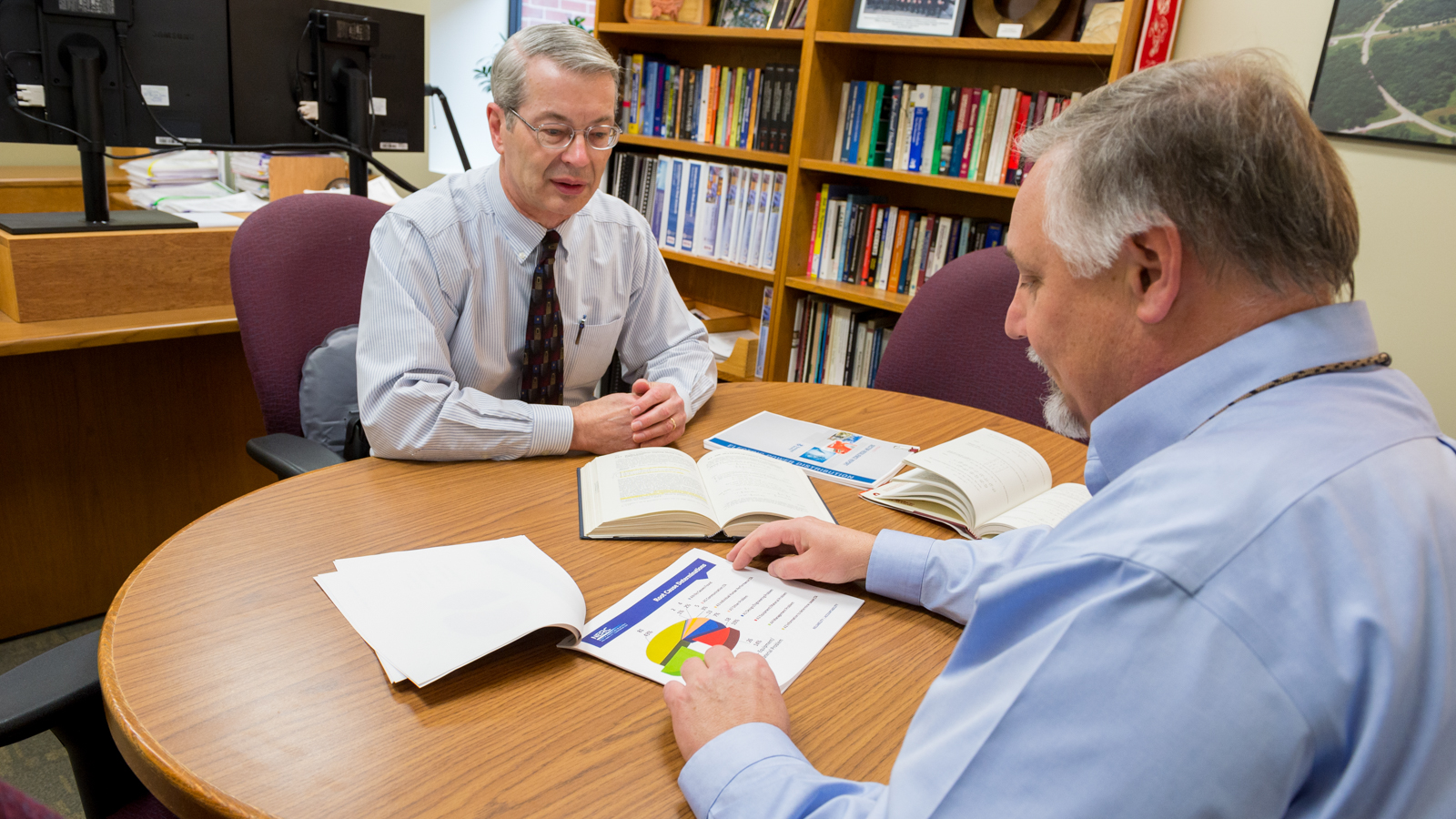
This story was originally published in volume 7, issue 1 of Argonne Now, the laboratory’s semiannual science magazine.
Five men got on the Tokyo subway on a March morning in 1995. It was the peak of morning rush hour. They all carried packets of a tremendously toxic nerve agent called sarin. Each rode several stops, then dropped the packets to the floor and punctured them with the sharpened tip of an umbrella. Then they quickly got off the train.
Sarin was first developed in Nazi-era Germany as a pesticide; it evaporates almost instantly into a gas that seeps into the body through the skin and eyes and interferes with the body’s electrical signaling. Victims die because important muscles, including the lungs, become paralyzed.
Some of the trains rode for miles before anyone stopped them. Hospitals were overwhelmed. 12 people died in the subways that day, and thousands more were poisoned.
As Japanese authorities tracked down the men, who were members of the religious cult Aum Shinrikyo, other countries around the world looked at the security of their own subways and public transportation. Subways are an attractive target for chemical and biological attacks because they cram a lot of people into small, enclosed spaces, and as they move from stop to stop, they spread the agent quickly. Before Aum Shinrikyo, no independent group had really succeeded in using chemical or biological weapons. The paradigm had shifted a little.
The United States asked the Department of Energy, which had expertise in radiological and chemical sensing, to begin looking into a network of sensors that could detect chemical weapons released in an enclosed space like the subway or a building.
“Each minute that you can shave off the response time saves lives in these kinds of situations,” said Argonne systems engineer Pat Wilkey, who oversees the resulting initiative, called PROTECT, now fully deployed in several major cities.
As Argonne engineers worked on the fledgling system, the U.S. encountered disaster from another route. After the September 11 attacks, President George W. Bush stepped up funding for projects like PROTECT and consolidated several agencies into the Department of Homeland Security, tasked with protecting the nation from disaster.
But the way the department is often portrayed in popular culture—surveillance and secret agents—leaves out a crucial aspect of its role. It also works on technology to detect attacks as they’re happening, like PROTECT, and helps federal and local governments prepare for all kinds of disasters, from hurricanes to accidental chemical spills to anthrax attacks.
Argonne, equipped with scientists, engineers, and analysts who had been working on security and protection for decades with the U.S. Departments of Energy and Defense, stepped up to lend support. In addition to PROTECT, the lab has helped local and state governments form emergency plans, run drills for a pandemic flu outbreak in the city of Chicago, and analyzed ways to enhance security at plants and factories across the country.
Argonne works to give federal agencies and local officials answers to questions like these: What geographic area might be affected by an earthquake? How fast can a utility get electricity back online after a hurricane? What should a city do if pandemic flu strikes? How fast does a chemical weapon spread through the subway? How long would it take to empty a stadium in case of an attack?
In the aftermath of 9/11, mindful of the subway attacks in Japan, researchers at Argonne continued to work on the early warning system PROTECT.
Engineers had already invented good chemical sensors; the team built them into a control system that would alert a human monitor and, ultimately, save lives.
Next, they wanted to find the best places to put the sensors. The scientists knew that airflow in the subways is affected by everything from the day’s weather to how many people are moving through the stations. They also knew that trains and subways aren’t airtight and that some gas would make its way to the surface. To get a map of exactly how a chemical agent would behave in these complex systems, the team released a harmless gas into several subway systems and tracked it as it moved.
They incorporated the data from the tests into the computer system that runs PROTECT. If there is a crisis, an operator sees lists of options pop up to recommend next steps: stopping the trains, closing or opening the ventilation shafts, or ordering evacuations. Once the fire department or other agencies arrive, they can plug into the system to get the latest data.
Since the system also incorporates security cameras in strategic locations, police find it valuable even beyond chemical release situations. “In a crisis, you need eyes on the scene,” Wilkey said.
In 2007, Argonne licensed PROTECT to a private company, Smiths Detection, which maintains the systems currently deployed in several major cities. Plans are underway to build PROTECT-based systems elsewhere.
Bouncing Back
The other half of protecting the nation is making sure that once a catastrophe happens, we know what to do. Much of the Department of Homeland Security’s focus is on helping communities prepare ahead of time for any disaster.
Modern security’s watchword is “resilience.” Resilience describes how quickly a system—a community, a power plant, an airport—recovers from a major blow, be it from terrorist or tsunami.
Resilience efforts tend to focus on infrastructure, which includes everything that keeps the country running behind the scenes. Most people take little notice of train lines, electric grids, cell phone towers, or water treatment plants until they’re interrupted by an earthquake or attack. Losing one or all of them throws a town into chaos. What’s worse, they tend to depend on each other.
“Failure in one infrastructure can cascade to another,” said Jim Peerenboom, director of Argonne’s Infrastructure Assurance Center, which performs analysis and helps federal, state, and local agencies run many of the exercises. “Say an earthquake ruptures a natural gas pipeline. Without fuel to produce electricity, the power plants shut down and the region may lose power. Without power, pumps can’t deliver water, stoplights go out, and once the backup generators at the phone company run out, there’s no phone or cell reception, either. Without communication, it’s harder to organize relief efforts.”
If a system is resilient, it contains fewer points where one thing going wrong leads to everything going wrong. Whether they are coaching city officials on what to do in case of a chemical spill or modeling what authorities should fix first in disasters, Argonne experts are thinking about how to reduce cascading effects.
In one study, Argonne engineer Steve Folga led a team that analyzed how a major explosion in a metropolitan downtown area would affect power, gas, phone lines and other essential infrastructure.
“Natural gas pipelines run throughout urban areas,” Folga said. “An explosion could fracture them, and gas could leak into basements of nearby buildings and homes. And unfortunately, turning off the gas is not a simple task. It may take out gas delivery to a large area, and in winter, that means people without heating.”
“You can never anticipate every single thing that might go wrong, but the more details are worked out in advance, the smoother the operation if disaster does strike,” Folga said.
Folga’s team also recently modeled an earthquake-tsunami combination in both Puerto Rico and the Pacific Northwest coastline. When a fault line north of Anchorage, Alaska, began causing tremors, they studied the potential effects of an earthquake there.
The exercises are useful for getting leaders in contact with one another—which can solve problems that might pop up down the line.
“Often we discover potential conflicts that no one’s thought about yet,” Peerenboom said, describing a scenario where a hospital is asked about its plans for evacuating critical patients in case of total power failure. “They’ll say, ‘We’ll call Private Ambulance Company A,’ and when we ask the other hospitals in the area, they name the same company in their plans. Obviously Company A only has a limited number of ambulances. In an emergency that knocks out power to the whole area—which is quite likely—they can’t transport everyone at the same time.”
Argonne also helps regional Homeland Security advisors evaluate threats. The department assigns at least one Protective Security Advisor, or PSA, for each state, according to population; Illinois has three. They serve as a link between local agencies (like fire and police departments), private security forces, and the federal government.
Argonne helped develop tracking tools that the PSAs can use to organize data to make better judgments. For example, one tool is designed for special events.
“Take the city where the Super Bowl is going to be held,” said Dave Dickinson, who leads a team at the Infrastructure Assurance Center. “That means there will also be a media tent, hotels for the players, and practice fields at local universities. Each one of those needs its own security assessment.”
The PSA collects data and works with other agencies to determine vulnerabilities at each site. With the help of Argonne’s data and special event tools, they offer guidance on where a community can send the resources they have—such as police, ambulances, and private security—to maximize protection and recovery.
While everyone recognizes the value of having procedures to help communities recover from any calamity, Peerenboom noted the paradox of working on systems that will hopefully never have to face a real-life threat.
“The work we’re doing is both essential and ideally invisible,” he said. “Our job goes on behind the scenes, but it’s absolutely vital so that we can avoid catastrophes and ensure quick recoveries.”
Research was supported by the U.S. Department of Energy, the Department of Homeland Security, and the Federal Emergency Management Agency.
